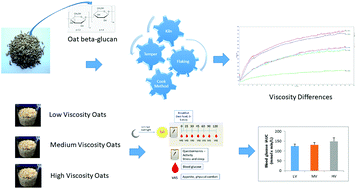Effect of processing on oat β-glucan viscosity, postprandial glycemic response and subjective measures of appetite
Abstract
Oat has procured its acclaim as a health promoting food partially due to its positive effect on glucose control. It has been demonstrated that oat β-glucan can interfere with postprandial glucose response. A large majority of this action is attributed to the increase in viscosity due to the β-glucan content in oat foods. While it is known that an increase in viscosity due to higher molecular weight of β-glucan can improve its glycemic effects, it is not known if an increase in viscosity attained by processing variables can further enhance the positive effect of oat on glucose control. In the current study we have examined the effect of kilning, tempering, microwaving, cooking, soaking and flaking on oat β-glucan viscosity. An acute randomized crossover clinical trial was also conducted to test oatmeal products containing low, medium and high β-glucan viscosity for their effect on postprandial glycemic response. Results from the processing experiments demonstrate that kilned samples, when tempered to 25% moisture and microwaved for 2 minutes, can produce much higher final viscosity compared to other samples with similar β-glucan content, molecular weight and solubility. However, results from the clinical trial show that the increase in the viscosity of the oat β-glucan attained through processing in this study did not have any effect on postprandial glucose control.



 Please wait while we load your content...
Please wait while we load your content...